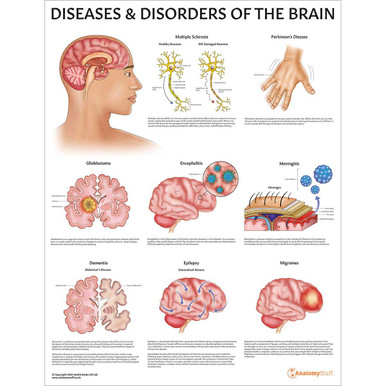Dementia and Alzheimer’s
As the body ages, the cells and tissues start to die, and there is a gradual loss of physiological functions of the body. Similar changes occur in our nerve cells, and once they start to shed off, it’s pretty hard to get them back to normal.
This article will cover the most significant points regarding dementia and Alzheimer’s.
Dementia Definition and Types
Dementia is a disease that occurs when the nerve cells lose their function and connection with other neurons. It can affect people of any age, causing memory loss and impairment in daily functioning. In the elderly, the most typical causes are Alzheimer’s and Lewy body. In comparison, brain injury or a tumour can cause dementia in the younger population.
Types of Dementia
There are multiple causes of dementia, Alzheimer’s being the most prevalent. Following are the different types of dementia:
• Alzheimer’s Disease Dementia
• Vascular Dementia
• Dementia with Lewy Body disease
• Frontotemporal Dementia
Disorders Associated with Dementia
There are a few other disorders associated with dementia, namely;
• Parkinson’s Disease with Dementia
• Huntington’s Disease
• Korsakoff Syndrome
• Creutzfeldt-Jakob Disease
• Chronic Traumatic Brain Injury Dementia
Moreover, patients with a weakened immune system, endocrine or metabolic abnormalities, malnutrition, brain injury or tumours, hydrocephalus, and diseases may cause dementia or mimic the dementia-like symptoms.
Note: Vascular Dementia is the second most common cause of dementia. Usually, different types of dementia occur simultaneously, causing a condition termed Mixed Dementia.
Free PDF Downloads
View AllWhat is Alzheimer’s?
Alzheimer’s is a neurodegenerative disorder with progressive damage to the neurons and bodily functions.
Increasing age is a significant risk factor for Alzheimer’s Disease Dementia. Other than that, positive family history or internal or external damage to the brain or neurons increases the chances of Alzheimer’s.
Alzheimer’s signs and symptoms
Since Alzheimer’s is a progressive disease, symptoms vary with each stage.
The first stage is short-term memory loss. Therefore, the early symptoms of Alzheimer’s include forgetting recent events, followed by difficulty in learning and memorising new concepts.
There is decreased thinking ability and reasoning skills in the mild to moderate stage. Other than that, there is impairment in behavioural and cognitive functions. It can be difficult for Alzheimer’s patients to learn, speak, or understand language. There is also speech impairment, sleep disturbances, irritability, lack of focus, mental instability, social anxiety, incontinence, and other psychotic symptoms in later stages.
Note: The first part affected by Alzheimer’s is the brain’s learning region, followed by the rest of the symptoms.
Diagnosis and Treatment
A differential diagnosis of Alzheimer’s is made by assessing memory and thinking skills or positive family history. Further confirmation is done based on laboratory and imaging techniques.
Many clinical advances have been made over the years in diagnosing Alzheimer’s and dementia. Researchers have found specific biomarkers that can detect changes in the brain. The most recent technique to diagnose Alzheimer’s Dementia is visualising amyloid pathology using a PET (Positron Emission Tomography) scan.
Unfortunately, there is no particular cure for dementia and Alzheimer’s. However, the severity of symptoms can be reduced with certain medications. Following are a few treatment options that may help improve cognitive function and reduce psychotic symptoms.
These treatments include:
• Acetylene cholinesterase inhibitors (Drug of choice for treating Alzheimer’s)
• N-methyl D-aspartate receptor antagonist
• Antipsychotic
• Cognitive engagement (or psychotherapy)
Note: Early diagnosis and treatment may prevent the progression of the disease to critical stages but not cure it permanently.
How to Differentiate Between Dementia and Alzheimer’s
Dementia refers to age-related degeneration of neurons resulting in amnesia or loss of memory. Note that dementia is not a physiological change but a pathology of the brain and nervous system. Therefore, it should be diagnosed and treated at the right time.
Alzheimer’s is one of the causes of dementia. Patients with Alzheimer’s present with variable signs, symptoms and memory loss. It is a disease that mainly affects the older population, 65 years of age and over, unlike dementia which has no specific age group.
Final Words
Dementia, in simple words, is a disease of the brain. It is a collective term for confusion, memory loss, and behavioural and personality change. Alzheimer’s, on the other hand, is the most common cause of dementia. To be more accurate, dementia itself is not a disease; rather, it’s a condition seen in various psychiatric disorders. The diagnosis and treatment of both conditions are similar.
Related products
View All














